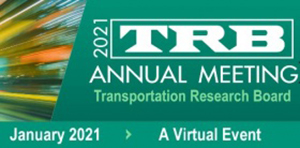Staff Reporter
Fleets Need to Have Contingency Plan for Emergencies, TRB Panel Says

[Ensure you have all the info you need in these unprecedented times. Subscribe now.]
Taking into account some of the myriad challenges presented by the coronavirus pandemic, management experts offered a glimpse of future operational issues and shared recommendations for how to address them.
Richard Fimbel, emergency manager at DBi Services, stressed the importance of maintaining and regularly updating “operational baseline” plans and documents, such as Threat and Hazard Identification and Risk Assessments (THIRA), comprehensive emergency management plans and continuity of operations plans. DBi Services is an operations and infrastructure maintenance company that serves the transportation, energy and retail industries.
Fimbel spoke at the Transportation Research Board’s annual meeting Jan. 26. Usually held in Washington, the event took place virtually this year.
“It shouldn’t just be a 3-inch binder on the top shelf that you look at once a year,” Fimbel said. “They’re living documents. It’s a document you really need to look at.”
When the pandemic prompted many people to start working from home, transportation agencies had to make changes to their daily operations and, in some cases, their personnel. Besides creating a drop in motor fuel tax revenue due to fewer people taking to the roads, COVID-19 also profoundly impacted the roadway maintenance and operations workforce. David Bergner, principal at management consulting firm Monte Vista Associates, said many state and local government agencies have eliminated salary increases, frozen hiring and cut seasonal employees. Agencies also have resorted to furloughs, layoffs and reductions in workforce.
“Because of seniority rules in the public sector, younger employees bear the brunt of such actions, resulting in a smaller and aging workforce,” Bergner said.
Other approaches agencies have taken include postponing or canceling roadway projects, cutting back on purchases of supplies, increasing taxes and issuing bonds.
The post-pandemic workforce likely will be marked with the lingering effects of these reductions, Bergner indicated. The workforce may be smaller due to layoffs and, if the economy improves, public workers may resign and take private sector jobs.
“Just as we will see significant permanent changes in other sectors, state and local transportation agencies will have to be more adaptable and flexible,” Bergner said. “The pandemic has to some extent accelerated the transformation of the transportation workforce that was already underway.”
In addition to pandemic-related challenges, transportation workers and emergency management professionals dealt with a host of other incidents this past year. Fimbel presented listeners with a sobering timeline depicting the “billion dollars disasters” that marked 2020 as COVID-19 ravaged the country.

In January 2020, before most Americans had heard of the coronavirus, Puerto Rico was struck with a sequence of earthquakes. In April and May, when people were starting to get used to lockdown mode, tornadoes swept across the southern and central parts of the country. George Floyd’s killing by police May 25 prompted social unrest alongside the ongoing public health crisis. When COVID-19 cases rose in July, “wildfires kicked in” across the western part of the country, Fimbel noted. The U.S. reached 300,000 deaths due to COVID-19 in mid-December, shortly before a bombing occurred in Nashville, Tenn., on Christmas Day.
“If I would’ve come to you back at TRB last year and said this many multiple disasters were going to occur [in 2020], I would probably have been thrown out the back door very quickly,” Fimbel said. “It really did make for some challenges and require us to think differently.”
Want more news? Listen to today's daily briefing:
Subscribe: Apple Podcasts | Spotify | Amazon Alexa | Google Assistant | More


